Chhattisgarh Case Study: Healthy soil miraculously boosts chilli crops
Story and photos by Madhukar Swayambhu, Founder & Research Head, Vaidic Srijan LLP, a member of CA4SH from Bharat, India
The Chota Nagpur Plateau is located in central India, spanning a large portion of eastern India, including the states of Chhattisgarh, Jharkhand, Odisha, West Bengal, and Bihar. For all practical purposes it can be called the “highlands in central India”, located in the northeastern part of the Indian Peninsular Plateau. It lies amidst the basins of Mighty River Ganga and Son River in Bihar. The state of Chhattisgarh lies between the latitudes of 17° 46’N - 24° 5’ N and the longitudes of 80° 15’ E - 84° 20’ E. Its proximity to the Tropic of Cancer has a major influence on its climate. The climate of the state is dry sub humid type. The average annual rainfall of the state is around 1400 mm, of which more than 90% is received during the south west monsoon period (June-September). The onset of monsoonseason is around the 10th of June every year.
This story comes from the year 2018, in the village of Pahanda near the state capital of Raipur, the outskirts of which is characterised by many villages with a substantial amount of land cultivated for various kinds of crops. In the month of January 2018, one of the key crops for the market was Chilies, but all the nearby villages had already completed the major crop harvest and there was a short supply in the market.
The crop is usually cultivated after a 160-day cycle, and most of the crops had already been harvested. Due to the supply shortage in the market, the prices were high and the new crop would take at least 3 – 4 months, before being ready for another harvest. Thus, farmers were looking for a solution to solve the crisis and take advantage of the open market.
They had previously tried chemical-based inputs, organic farming, and other mainstream methods, but had never tried focusing on soil health for a better crop. They had been working on adding fertilizers (chemical or organic) to improve soil fertility but had not thought much about the concept of healthy soil.
But in this high-pressure situation, they were open to new ideas and approaches, because the conventional ideas weren’t helping them anyways. Therefore, the new approach of a proprietary Cownomics® Technology, rooted in ancient Indian Vedic sciences focusing on the resurrection of native ecology in soil, water and air, was an attractive option. Plus, the community already had implemented a pond which they maintained with the same technology next to the Chili farm.
The approach that Cownomics® Technology takes is very simple. Plants are the link between the soil and air ecosystems, with roots in the soil and leaves in the air. If “rejuvenated water” is used to make plants healthy, it would enrich the soil ecology and exemplary results could be observed. The “rejuvenated water” is characterised as having various properties like a complete electrolyte balance, high Dissolved Oxygen (DO) levels, rich chlorophyll content, low viscosity, and an active aquatic food chain. When this water is used as a foliar spray on the leaves at sunrise, the water gets absorbed by the plant completely and the plant’s immunity is strengthened. The minerals, not required by the plants are released to the soil, helping the soil health to improve.
Focusing on Soil Health instead of Soil fertility with the Cownomics® nature-based technology has the following benefits:
Creates a microclimate in the farms, making them disease, pests and weather-resilient.
Low input for agriculture (no fertilizer, no insecticides or pesticides needed), even the water requirement in irrigation reduces by 90% by using only foliar and drip as the irrigation method.
Increases the yield (boosts up the fruiting and harvesting time frame, as well as the post-harvest longevity of the crop).
Low input and high output results in high profitability to the farmer.
Makes a high-quality zero chemical crop, which is good for the consumers and helps clean the food chain of the harmful chemical residue that comes due to excessive usage of fertilizers, insecticides, hormones, pesticides, fungicides and weedicides.
Thus, the community started using their pond water in the prescribed method during the period when chillies are usually at the end of their crop cycle. Usually, the final crop is harvested at 160 days, but this revitalization started on the 220th day. Here is what the farmers witnessed:
19th of January 2018: farmers used the pond water for a foliar spray for the 1st time.
22nd of January 2018: the leaves started changing rapidly from pale yellow to dark green.
27th of January 2018: white Chili flowers started blooming again on the entire 5-acre farm.
29th of January: fruiting started again.
4th of February: the fresh Chili crop was ready to be harvested again from plants which had been on the verge of being pulled because they had already given their seasonal yield.
Harvesting continued until the 5th of March, 267 days from the sapling plantation day.
The farmers stated that they had never seen this kind of event - for them, it was nothing short of a miracle. Their original harvest was 8.2 tons, and the new crop gave them an additional yield of 12.12 tons. Moreover, the second crop came when the market demand was high but supply was low, so they received 6 times the price compared to their original.


